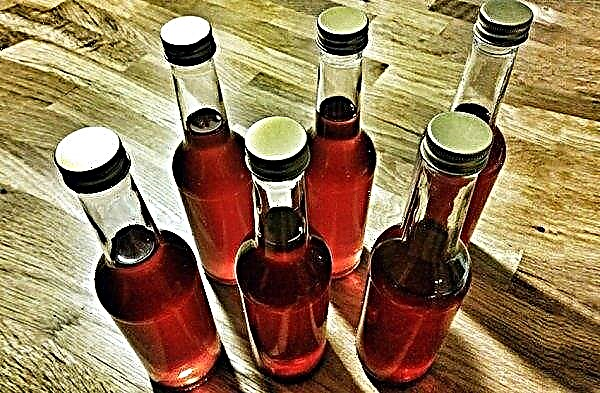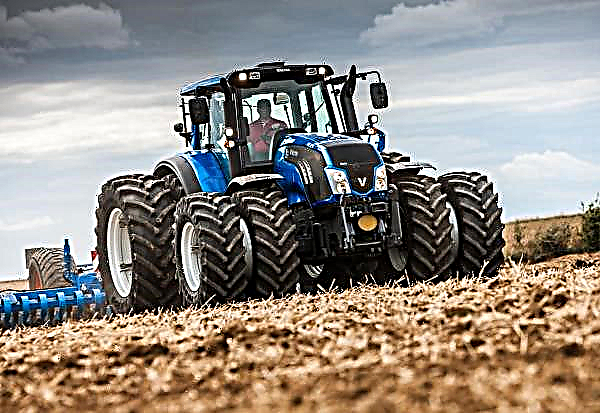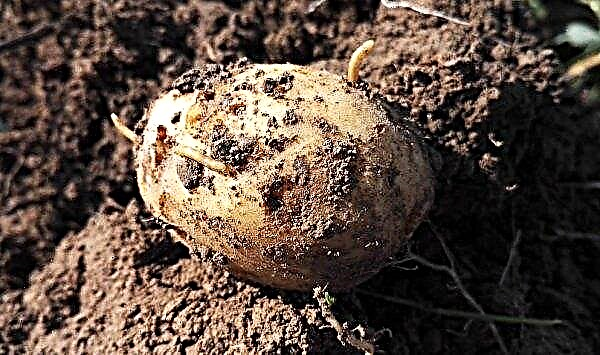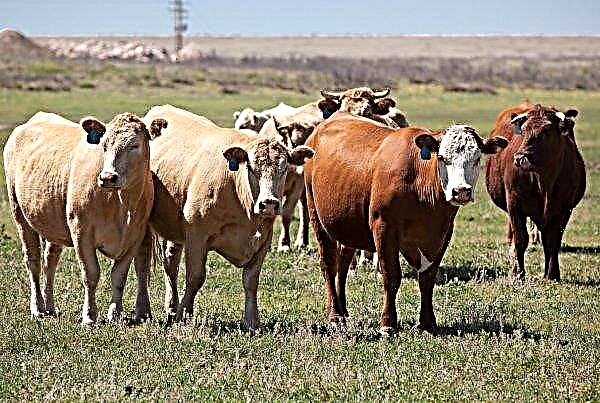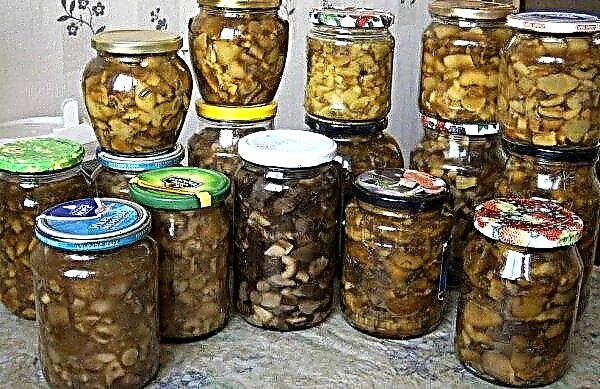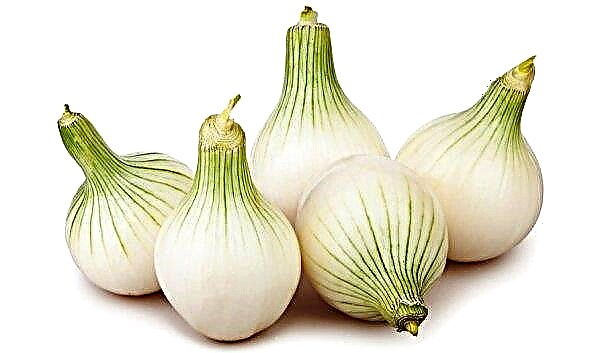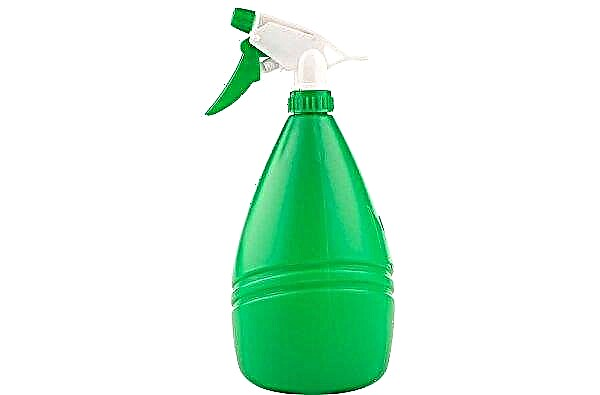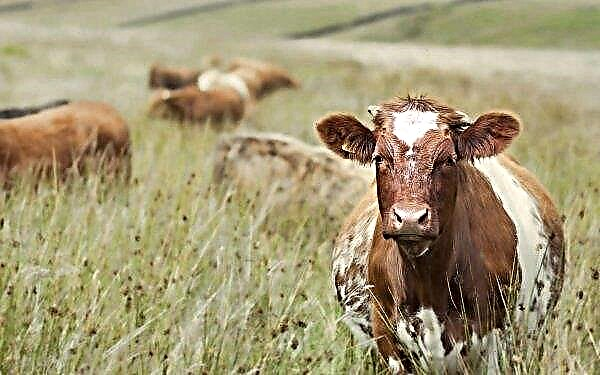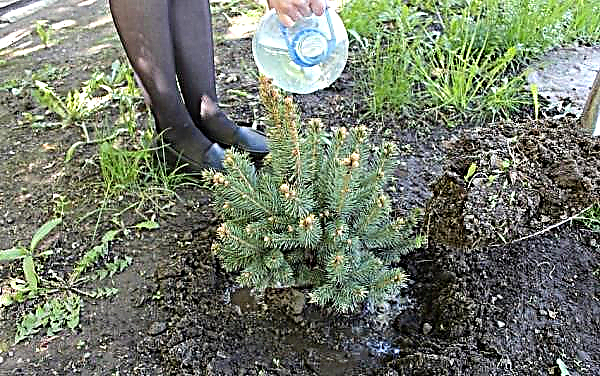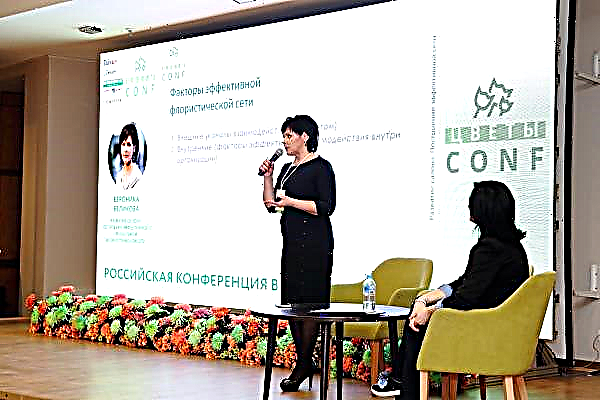You can often see ugly brown spots on the stems and leaves on recently healthy and green potato plantings. It develops a parasitic fungus, causing an outbreak of a disease known as alternariosis. The article will discuss what alternaria is, the symptoms of the disease and measures to combat its development are described.
Disease Description
In mid-summer, scattered dark brown oval concentric spots may appear on the leaves of the potato, which gradually increase and become more extensive. When brown spots spread and occupy the entire area of the leaf plate, the leaf affected by the infection dies. Spores of the fungus often infect tubers, which manifests itself in the form of fragments of black rot.
Did you know? Potatoes appeared on tables and gardens of Russian people only in the 17th century. For a long time, people did not want to eat the “satanic apple,” therefore, potatoes were firmly established in Russia only after a special decree of Peter I.
The occurrence of this disease is effectively prevented with the help of fungicides and biological products used on potatoes. The prophylaxis carried out in the future does not exclude the need for special measures to protect plants from alternariosis during the growing season.
Causes and pathogens
The disease is caused by spores of the fungus Alternaria solani and is present everywhere where potatoes and tomatoes are grown from year to year, that is, plants belonging to the Solanaceae family. After some time, the diseased bush loses its stems and leaves, thereby significantly reducing the time of its vegetation, and, accordingly, the quantity and quality of the crop.
Alternaria solani lives from one summer season to another in the remains of dead infected plants, in the soil or on the peel of food and planting potatoes, so it can infect plantings in the next season. The fungus infects the leaves directly or through minor mechanical injuries.
Primary infection immediately manifests itself at the beginning of the season on potato seedlings, but alternariosis develops much more seriously in adult bushes. The victims of the fungus usually become actively growing mass of bushes or plants growing in the soil, where there is an excess of nitrogen. Infection spreads most quickly in rainy and damp weather. Alternaria solani
Alternaria solani
Signs of tuber disease
Oblong and oval brown spots appear first on the leaves of the potato, then on the stems and root crops. On older leaves, tiny brownish-black lesions are visible. Around the spots, leaf tissues change their color from burgundy to gray. Brown tuberous spots are visible on infected tubers.
On a rainy summer, during a favorable period for the disease, all foliage on infected plants becomes spotty, under the bushes the quantity and quality of the crop decreases. Root crops can be infected both immature and ready to harvest, as they are associated with stolons infected with the plant. Infection can lead to a loss of 30-50% of the planned crop.
Did you know? Potatoes are domesticated more than 8,000 years ago by the natives of South America. For the first time this root crop was brought to Europe by the Spanish conquistadors returning to their homeland.
The infection spreads further when the infected root crop is stored. All healthy potatoes that are in the box with diseased specimens will be infected. In this case, you have to sort, and remove the affected tubers from the storage. If this is not done, all stored tubers can rot.
How to deal with alternariosis?
To combat this disease, both chemical preparations containing active substances (fungicides) and biological antifungal agents are used. It is tempting to grow an organic crop that is clean from chemistry, but still gardeners should not rely too much on biological methods of protection. Sometimes there is no other way out, as soon as the chemical treatment of plantings is applied to combat a rapidly developing fungus.
Biological products
As protection biological products, planting tubers and growing potato bushes are treated with antifungal agents, such as: Fitosporin-M, Gumi-20, Borogum, Immunocytophyt, Fitochelp, Bitoxibacillin, Lepidocide, Lepidocide Bicol ". It is optimal to use antifungal agents for prophylactic spraying of a growing crop.
Important! During all types of chemical treatments, protect yourself with special clothing, boots, a respirator, a hat and glasses. At the end of spraying the plantations, take a shower and wash your work clothes.
The drug is diluted in water according to the instructions attached to the tool and applied to the planting of potatoes using a pump-action garden sprayer, on which a finely dispersed sprayer is required to be installed. The product should lie on the leaves and stems of plants with a small, moist fog. Antifungal treatment is repeated every 2 weeks. If it rained shortly after the procedure, treatment must be repeated. To treat the planting tubers with one of the antifungal biological agents, you need to apply the drug diluted with water on the surface of the potato. This is not difficult to do if you carry out the processing procedure with an assistant.
To treat the planting tubers with one of the antifungal biological agents, you need to apply the drug diluted with water on the surface of the potato. This is not difficult to do if you carry out the processing procedure with an assistant.
Processing potato planting tubers with biological antifungal drugs:
- A piece of polyethylene having a width and a length of at least 1.5 m is spread out on the ground.
- An antifungal drug is diluted immediately before the treatment of planting material begins.
- The diluted solution of an antifungal agent is poured into a pump sprayer.
- 10 kg of planting tubers are poured onto polyethylene, after which the root crops are laid out in one layer.
- The antifungal solution from the sprayer is abundantly applied to the scattered tubers.
- After that, both people grab the edges of the polyethylene and gently shake the cloth so that the root crops lying on the surface mix well.
- After mixing, the processed planting tubers are poured into a box, and a new portion of potatoes to be processed is poured onto polyethylene.
Did you know? The main potato pest — Colorado beetle — appeared in Europe in the middle of the XX century. Gradually migrating, the Colorado beetles reached the coast of France, from where they got to Poland by sea vessels and then to the countries of the former USSR.
Chemicals
Most potato varieties that are cultivated today are susceptible to alternariosis, so intensive chemical control is required during planting. As protection of root crops from fungal diseases fungicides are used. Modern fungicides against fungal diseases of potatoes are divided into three groups depending on the mode of action.
Varieties of fungicides:
- Contact fungicides. Plant protection products that affect the surface of a plant in contact with a pathogen. Kill spores of the pathogen (conidia) on the surface of the leaf before they germinate. Provides long-term protection for preventive use. They do not penetrate into the plant, therefore pathogens in an already infected plant do not kill. The duration of contact fungicide depends on the growth rate of the plant and the amount of precipitation. The minimum interval between spraying the drug from 5 to 8 days.
- Deep, or local systemic fungicides. Their active ingredients penetrate the plant and have an antifungal effect at the absorption site. The effect lasts longer after spraying, therefore longer intervals can be maintained between treatments than after application of contact fungicides.
- Absorbable, or systemic fungicides. The active ingredients of these substances are applied to plants, absorbed and begin to be transported through the tissues and cells of the potato. Systemic drugs should be used in the intensive growth phase. This usually coincides with the start of the planting protection season. Partially transferred to new stems and potato sprouts, but this concentration is often not enough to protect them from infection. This means that during periods of intense growth, the intervals between application of systemic fungicides should be shortened.
Deep and absorbable agents are able to block the growth of developing fungi on an infected plant and stop the development of spores. This is called a healing effect. The treatment agent can stop the latent infection in the foliage, which after treatment can no longer develop. This is important if the first visible symptoms have already appeared, and the development of a latent infection is likely, especially in case of disease-stimulating weather.
The time required to safely stop latent infections is from 1 to 3 days. Deep systemic fungicides that quickly penetrate the plant reliably protect the potato bush. Therapeutic active fungicides create a complete preventive and therapeutic effect, depending on the conditions of the infection, for the next 7-12 days.
Systemic fungicides:
- Topsin-M;
- "Impact";
- Celest
- "Acrobat";
- "Healer".
Contact fungicides:
- "Kuproksat";
- Champ Ultra;
- Pencoceb;
- "Infinito."
 Usually, two treatments (contact and active systemic) with a fungicide are sufficient to protect the crop to prevent damage to the potato by alternariosis. In hot summers, moisture on the plants dries quickly, so the risk of infection is low. But one should not wait for the appearance of the first symptoms, it is better to carry out preventive treatment of plantings in order to avoid the development of a serious epidemic.
Usually, two treatments (contact and active systemic) with a fungicide are sufficient to protect the crop to prevent damage to the potato by alternariosis. In hot summers, moisture on the plants dries quickly, so the risk of infection is low. But one should not wait for the appearance of the first symptoms, it is better to carry out preventive treatment of plantings in order to avoid the development of a serious epidemic.
Further protection depends on the weather. Spores of the pathogen of alternariosis are activated at a temperature of +16 ... + 22 ° C, and at temperatures above + 28 ° C, the fungus is inactivated. An epidemic of the disease can be expected if the rainfall in June is at least 100–120 mm. In the case of rainy June, it is imperative to treat the potatoes with fungicides that contain together contact and absorbable active ingredients.
Important! Contact fungicides are suitable for use during weaker infectious pressures, for example, during droughts in July-August or after potato bushes have already completed intensive growth.
It is necessary to use a combined fungicide up to two times, preferably as a preventive measure, after which change the drug to another fungicide with an active effect. Thus, proper protection can prevent the growth of resistant pathogens on potatoes. Combined active (systemic + contact) fungicides must be applied 2-6 times during the growing season, depending on weather conditions and the degree of threat of infection. Frequent rains in June reduce the duration of the applied fungicide, therefore, treatments may be necessary at intervals of 7-8 days to protect against the risk of alternariosis.
Frequent rains in June reduce the duration of the applied fungicide, therefore, treatments may be necessary at intervals of 7-8 days to protect against the risk of alternariosis.
Alternaria Prevention
The pathogens of alternariosis develop as soon as they get into a favorable environment for them (dampness and heat). The use of proper agricultural techniques for growing potatoes is more important to prevent the development of the disease, but even this does not provide sufficient protection for plantings.
Important! Recommended for 3–5 weeks before harvesting to cut potato tops in preparation for the harvest. Before harvesting the tubers, a thick skin will grow in the ground, which can protect the potatoes from the occurrence of rot.
Preventive measures to prevent an outbreak of alternariosis:
- Plant healthy, proven planting stock. If tubers are used for planting from unverified sources, it is advisable to pre-disinfect them, as they may contain fungal spores, which will cause an epidemic of the disease on plantings.
- Need to stick to crop rotation and do not grow potatoes in the same place earlier than after 4–5 years. The causative agent of alternariosis can also overwinter on the crop residues of the crop grown in the previous year, so they need to be collected in the autumn and burned.
- Potatoes are planted shallowso that the soil warms up quickly. The place for planting is chosen dry, the soil under the culture should not have a tendency to waterlogging.
- Planting of root crops begins when soil temperature from + 8 ° C.
- During planting, the potato rows are positioned in the direction of the dominant windso that the foliage can dry as quickly as possible after it gets raindrops or dew.
- Need to provide culture balanced nutrient supplyavoiding excessive nitrogen.
- During harvesting, it is advisable to avoid mechanical damage to the tubers. The harvested is sorted out as soon as possible, and after thorough drying it is stored in a room with a temperature of +8 ... + 12 ° C.

Resistant varieties
To exclude the possibility of an epidemic of alternariosis, it is recommended to grow varieties of root crops less sensitive to potato diseases.
There are many varieties that have good resistance to fungal diseases, for example:
- Tekra;
- Adretta;
- Gloria;
- Bronnitsky;
- Lily of Belarus;
- Crane;
- Lyubava.
Characteristics of the most popular varieties:
- Adretta. Oval root vegetables with yellow flesh and light brown dense skin. The tubers taste great, the potato pulp boils well, the weight of the tuber is from 65 to 100 g. The variety is resistant to alternariosis and late blight. Canteen, very productive, with one hundred parts, you can collect up to 400 kg of tubers. It will take 60 to 80 days to grow.

- Bronnitsky. Light-skinned variety with flesh of sand color. The size of the tubers is medium and large, the mass is from 90 to 120 g. The minimum yield per one hundredth is 300-320 kg, with good agricultural technology and the use of fertilizers, the yield increases to 540 kg per hundredth. It has excellent resistance to diseases such as scab, alternariosis and black leg. It takes 80 to 85 days to mature.

- Lyubava. Mid-ripening, cherry-colored tubers with white flesh, mostly large, weighing from 110 to 210 g. Contains not too much starch, so the potatoes practically do not darken after peeling. High yield of the variety is combined with excellent resistance to diseases (late blight, alternariosis and potato cancer). However, poorly resistant to scab.

Alternariosis is a dangerous disease of the potato, and if urgent measures are not taken after the first symptoms of the disease occur, up to 30% of the crop can be lost. Agronomists recommend not to wait for the development of the disease, but to carry out preventive treatment of potato plantings.




